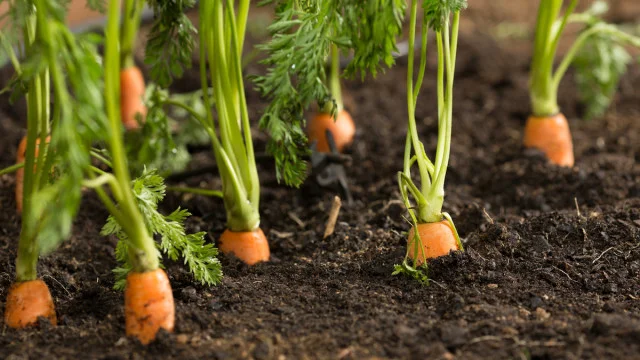
Carrot growing in Kenya can be challenging but it has huge rewards when one is successful. Carrots have numerous health benefits such as promoting good vision and skin health. Other benefits include:
- helping with weight loss
- aiding the management of diabetes
- promoting healthy bones
- boosting digestive health
Carrots take longer to germinate than other crops, taking 12-15 days on average. This article will guide you on how to successfully grow carrots in Kenya.
What is the best season for growing carrots in Kenya?
For germination, carrots need warm temperatures. It is for this reason that carrots take longer to germinate during the cold seasons. But to develop sweet fat roots, carrots need cooler temperatures. Thus, carrot farmers in Kenya should avoid hot regions.
The main regions in Kenya where carrots are mostly grown include Central, Coast, Rift Valley, Nairobi, Nyanza, and Western regions.
Best carrot varieties in Kenya
The best carrots with the best yields in Kenya are the hybrid variety. The type of carrot you decide to plant should depend on the target market.
For instance, the Chantenay is suitable for the canning industry. It was introduced in Kenya in 1952 and it can grow in shallow soil types and heavy clay soils, per Safi Organics.
The Nates variety is the nmost suitable for the fresh market. It has a cylindrical shape, matures early, and has has a smooth skin that makes it marketable. Its roots are also sweet and small.
Other varieties that are good for the fresh market are Touchon and Nebula F1.
Planting carrots
Since carrots are sown into the soil, the soil should be loose and free of any vegetation because organic matter will attract pests and diseases. 2.5 kgs of seed should be used to plant an acre of carrots. The soil should have organic manure.
Carrot seed germination tests
Before sowing, seed germination tests should be conducted. This is done by wrapping seeds in a ball of wet cotton wool, leaving it for seven days, and then checking the germination rate. Plant only the varieties that have more than 85% germination rate.
Management of carrots
Carrots should be thinned after three weeks of planting, ensuring that one plant is 10cm from another. This allows enough space for health growing of carrots. Weeding of carrots should be done twice, when thinning (3 weeks after planting) and three weeks after thinning.
Exercise caution when weeding to prevent damage to the carrot roots.
Husbandry
Crop rotation should be practiced to prevent soil borne diseases. Mulching should be done if the farm is dry. Alternatively, one can plant carrots with fruit trees. Irrigation should be done when there is little rainfall.
Carrot fertilization
Successful carrot farming will depend on fertilization. The type of fertilizer to apply will depend on the soil type and the stage of growth. This is why it is advisable to use an agronomist who will perform a soil test before planting.